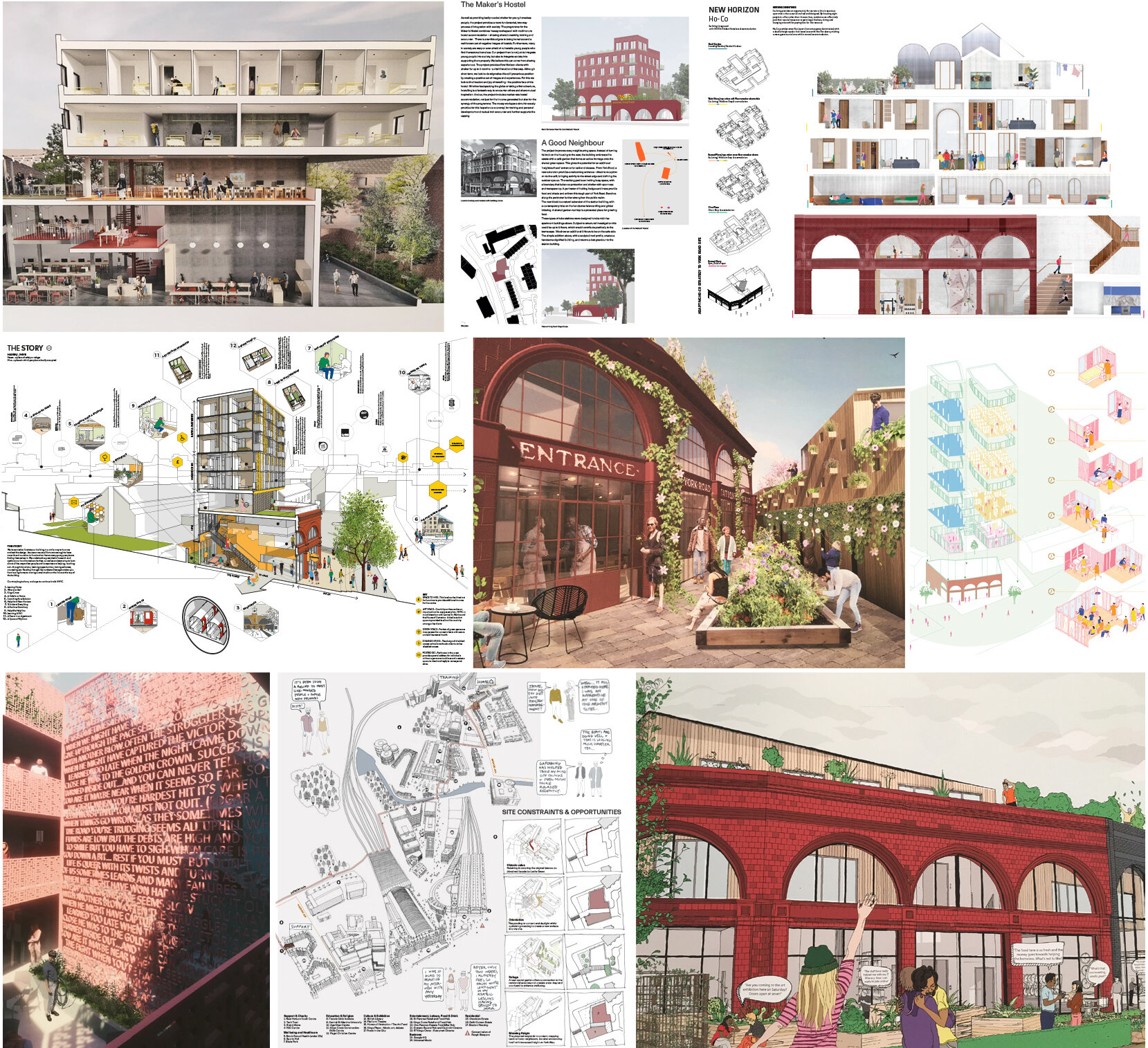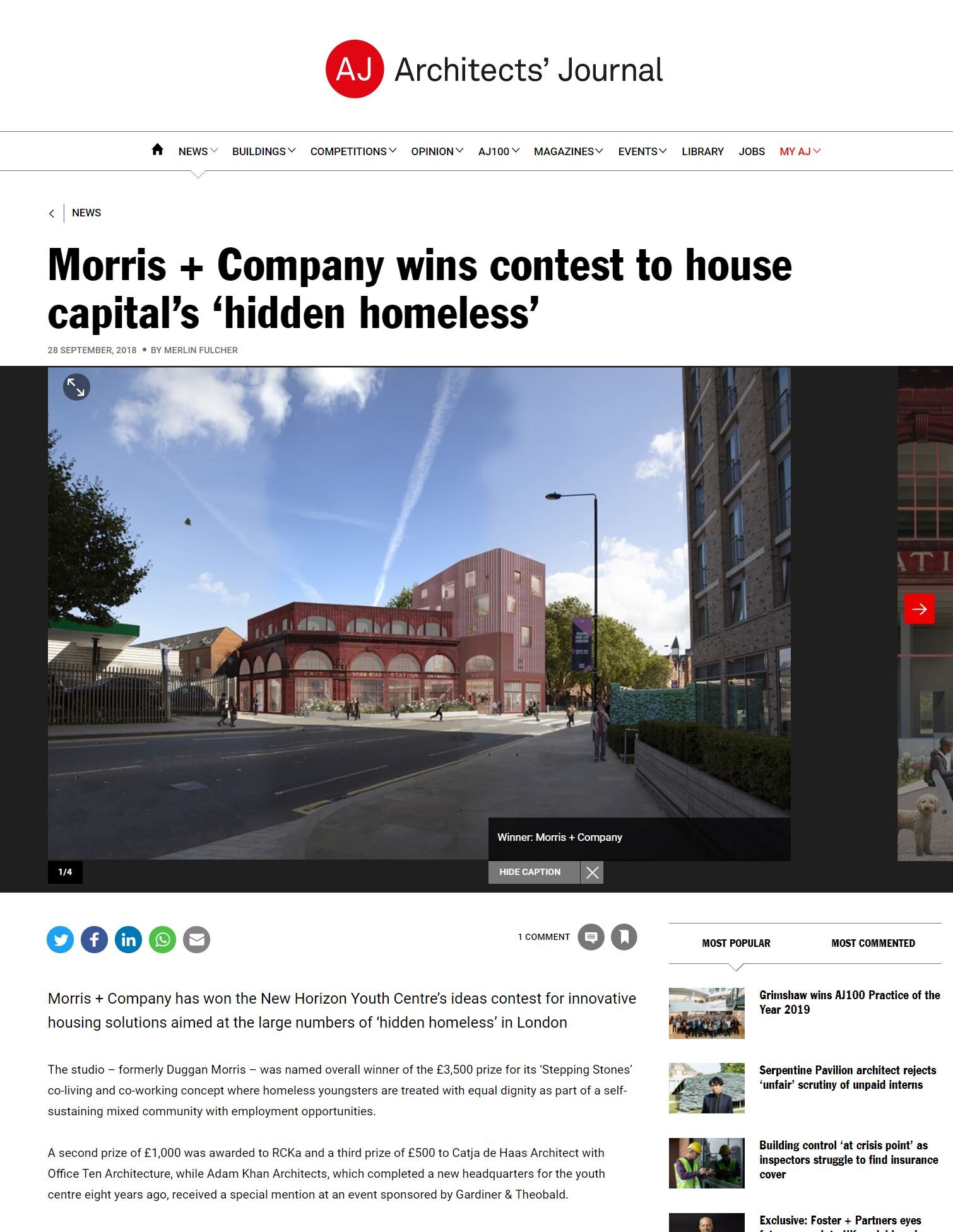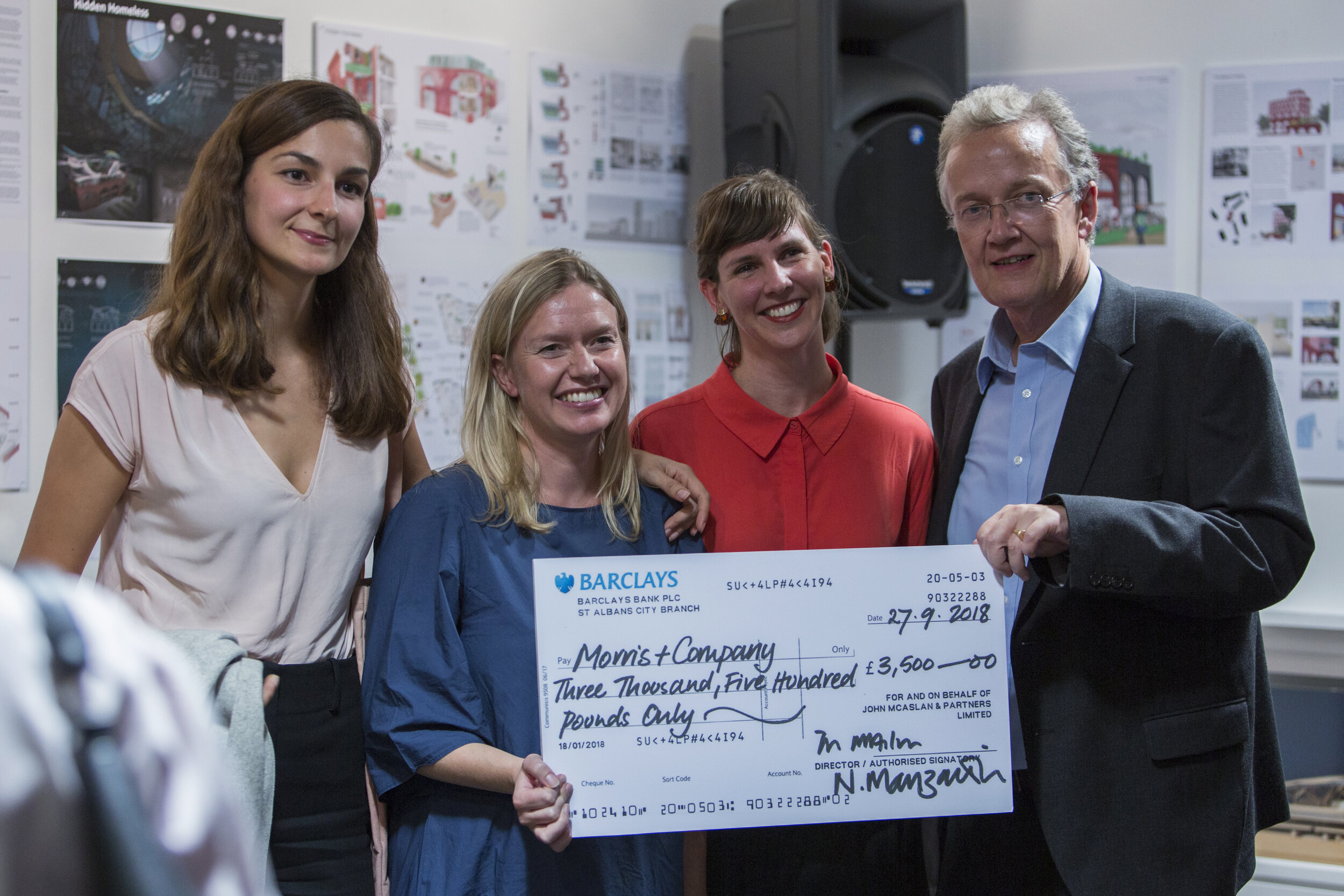Rough sleeping in Covid-19
Architects Aware! (AA!) is a think tank of built environment professionals brought together to tackle homelessness.
London Boroughs and the GLA have acted to safely rehouse people who are sleeping rough during the Covid-19 pandemic in line with ‘Everybody In’. This was an unprecedented operation, which the Government estimates resulted in 90 per cent of known rough sleepers being placed in hotel or other emergency accommodation. We cannot go back.
Hotel accommodation is a temporary solution and only addresses part of the homelessness problem. We understand close to 15,000 people have been temporarily housed in hotels to prevent any risk of them sleeping rough during the pandemic, but this is only 5.5% of the estimated 274,310 people homeless in the UK today. People who are sleeping rough were the visible embodiment of homelessness. The vast majority are in insecure temporary accommodation - the so called “hidden homeless”. Whilst ‘Everybody in’ provided a fantastic emergency solution it was only intended for single people who are sleeping rough. Homelessness goes wider than the groups helped. This initiative does not help unknown rough sleepers, families, and those whose homelessness is hidden.
Diagram to demonstrate what needs the hotels currently housing homeless are meeting and what services are not able to be provided in the pandemic. Diagram by re:work (London School of Architecture)
‘Everybody In’ provides empty hotels as an immediate solution to rough sleeping. The hotels are a crisis response that have created a chance of a lifetime to bring some people in, if we have the courage to dream differently and the will to act quickly, we can work together to help to help people to stay indoors into the future.
The economic impact of the pandemic provides an opportunity to create appropriate accommodation to both ensure people who are sleeping rough remain off the street for good, and to address hidden homelessness. Vacant existing properties and businesses dislocated by Covid-19 could be re-purposed to create high-quality meanwhile solutions. Economic activity can be stimulated through purpose-built accommodation.
AA! has provided three design studies to illustrate how typical existing buildings could be re-purposed to address rough sleeping and the wider homeless crisis. ‘Everybody In’ has allowed thorough consultation with those single rough sleepers temporarily housed in hotels, to better understand their needs and inform a long-term strategy. Depaul’s experience in running the hotels has identified groups of people who are least likely to be served by existing move through housing and support options, and for whom new, innovative and affordable offers need to be found - they fall into the three categories:
Diagram to explain the key groups of homeless people currently living in hotels, their needs and potential existing accommodation typologies which could provide a solution. Diagram by re:work (London School of Architecture)
WORK READY HOMELESS
Those who are often in low paid, zero hours or temporary jobs – an often transient community with low support needs, but unable to afford private rented sector rents. Often geographically isolated from family or support networks.
Accommodation should be located in close proximity to work and the emphasis needs to be on affordability. Communal living with an emphasis on shared amenity over self-contained to reduce living costs. The transient nature of this cohort could align with meanwhile use and/or the high quality refurbishment of vacant properties available as a result of the pandemic.
YOUTH HOMELESS (18-25 YEAR OLDS)
This group represents the hidden homeless, and occasional people who are sleeping rough. The priority is to intervene to prevent their homelessness becoming entrenched and preventing them from achieving their potential. High quality purpose built facilities with support as well as good quality, affordable move on options would provide an appropriate solution, including new build or refurbishment of existing properties.
ENTRENCHED ROUGH SLEEPERS
Homeless and rough sleeping sometimes for over 10 years, these people are often alcohol dependent and unlikely to go back to structured work. Although relatively self-sufficient this group may require social and health support. High quality refurbishment of small hotels could be appropriate, with adaptation to provide support spaces.
‘We have a once in a lifetime opportunity to think boldly and imaginatively about how we meet the needs of all people who have slept rough or who are at risk of sleeping rough. Depaul has put its efforts behind those groups of people who continue to fall outside of the usual housing and support provision. Working together with experts and professionals in the built environment industries, we aim to bring into use empty building’s to safely and sustainably contribute to bringing people indoors for good.’
Alexia Murphy Depaul
For each of the highlighted homeless user groups AA! has considered how existing buildings might be adapted to provide bespoke long-term solutions to ensure people are given the means to leave the streets for good. The proposed building typologies could also be adapted to offer solutions for homeless groups beyond those identified in this report.
We seek comment on our ideas, policy support and access to potential properties to allow ‘Everybody In’ to become an appropriate long-term solution.
AA! has provided three design studies which provide illustrative examples of how typical existing buildings in London which may become more readily available as a result of Covid-19 could be re-purposed to address the homeless crisis in the UK.
01. Re-imagined small hotel
AA! has considered how small hotels could be adapted to provide medium to long-term accommodation to suit the needs of the ‘entrenched’ people who are homeless. A simple internal reconfiguration with minimal impact on façade and structural elements could transform these buildings into fit for purpose accommodation. The study shows how small hotels might provide large en-suite bedrooms with a shared ‘dining hall’ and associated support facilities.
Design study for conversion of B&Bs in Sussex Gardens to provide accommodation for the ‘entrenched homeless’ by Catja de Haas Architects
02. Re-imagined commercial space
AA! has considered offices, pubs and retail units to provide short term accommodation designed to suit the needs of ‘work ready’ people who are homeless. Pre-fabrication and off site modular components could be utilised to provide replicable solutions for different sites. The study below shows how small units could be converted to provide sleeping space, a shared ‘hub’ kitchen and supporting facilities for the worker group.
Design study to consider the conversion of small commercial properties to provide accommodation for ‘Work Ready’ Homeless Amos Goldreich Architecture
03. The role of meanwhile use
AA! has considered meanwhile use of buildings to provide accommodation for all homeless groups. Refurbishment of existing buildings could provide short-medium term accommodation for the ‘young’ people who are homeless. Simple architectural adaptations to the building’s interior and entrances could provide fit for purpose accommodation with supportive day services for young homeless groups. This would be paired with an appropriate community use embedding the facility into the community, creating a symbiotic relationship.
“Making use of stuck or forgotten spaces is part of London’s history. The city has many examples of successful meanwhile use projects providing valuable cultural, retail and entertainment offers. The pandemic offers a unique opportunity to look again at the way we utilise these sites to address a more pressing issue. Covid-19 has caused disruption to the construction industry which will likely result in more building projects being put on hold for longer. Sites previously designated for meanwhile uses have also been impacted due to social distancing rules. This presents an opportunity for the built environment sector to consider how these buildings could be safely used to provide a meaningful, meanwhile contribution to resolving the homelessness crisis.”
Heather Macey, AA! Founder, John McAslan + Partners
An existing building which could provide meanwhile use homeless facilities during Covid-19
Proposed reconfiguration of existing building to provide emergency homeless accommodation for the ‘Worker Homeless Group’ alongside a day centre for youth homeless and associated support facilities
Proposed adaptation and refurbishment of meanwhile use building to provide permanent holistic homeless facilities by John McAslan + Partners











